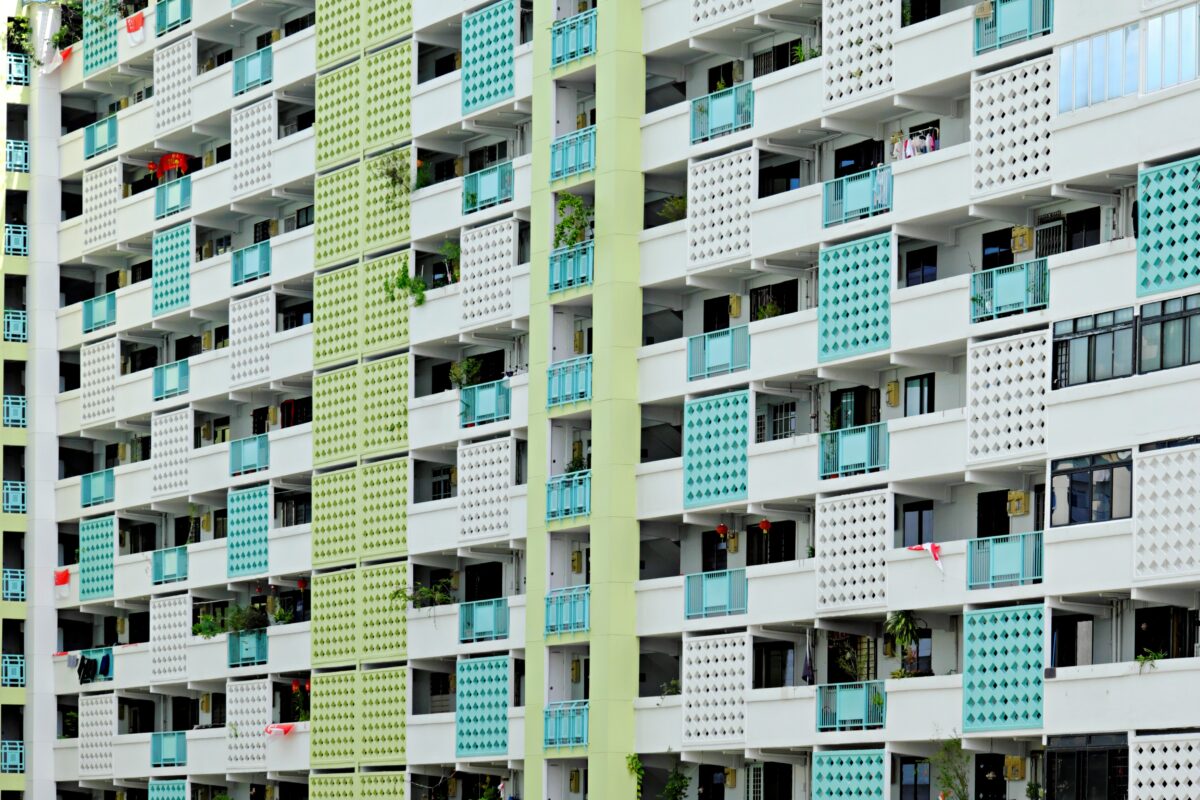In a significant move, Singapore’s Housing and Development Board (HDB) and the Urban Redevelopment Authority (URA) have announced an increase in the occupancy cap for larger public flats and private homes. This change, effective from 22 January 2024 to 31 December 2026, allows up to eight unrelated individuals to live in these larger residences, aiming to meet the burgeoning demand for rentals.
How did the policy come to be?
The need for this policy shift stems from the sharp rise in residential rents since 2022, attributed to market tightness caused by COVID-19 disruptions and robust rental demand. The policy covers HDB flats that are four-room or larger, as well as living quarters in HDB commercial properties of equivalent size, and private residential properties of at least 90 square meters.
Details of the policy
The Singaporean government’s decision to increase the occupancy cap in larger residential units is a strategic response to the growing pressures in the rental market. This temporary policy is designed to ease the rental demand by allowing up to eight unrelated individuals to reside in larger public and private residences. Previously, the limit was capped at six unrelated individuals, indicating a significant shift in housing policy to accommodate changing market needs.
Policy scope
Under this new regulation, the scope of properties affected includes HDB flats that are four-room or larger and living quarters in HDB commercial properties of a similar size. Moreover, the policy extends to larger private residential properties, specifically those at least 90 square meters. This broad coverage ensures that a substantial portion of the housing market can contribute to alleviating the rental demand, particularly in areas where larger families or groups seek affordable living solutions.


Application via HDB and URA
To comply with the new occupancy cap, residential property owners who currently accommodate up to six unrelated people must apply to the respective authorities – HDB for public flats and URA for private residential properties. This process is crucial to ensure that all changes in tenancy adhere to the updated regulations and maintain the integrity of the housing system. The application encompasses not only the additional occupants but also the property owners and existing tenants, underscoring the comprehensive nature of this policy.
Read more: The URA Master Plan 2025: A glimpse into Singapore’s future
Policy objective
Minister for National Development Desmond Lee emphasised that this measure is specifically tailored for larger properties, as they can accommodate more occupants with minimal impact on the surrounding community. The goal is to maintain a conducive living environment for everyone, balancing the need for increased housing capacity with the quality of life for residents. This decision reflects a thoughtful approach to urban planning, considering the immediate needs of those seeking rental accommodation and the long-term sustainability of living spaces.
In pursuit of flexible housing options
Furthermore, this policy reflects the government’s commitment to addressing the diverse needs of Singaporeans. Whether it’s families waiting to move into new homes or younger individuals seeking their own space, the increased cap aims to provide more flexible housing options. This measure, while temporary, is part of a larger strategy to ensure that the housing market remains responsive and adaptable to the evolving demands of the population.
Implications for the rental market
Industry experts like Mr Lee Sze Teck from Huttons Asia suggest that while the move might offer a short-term fix to stabilise the rental market, it’s unlikely to significantly impact rents due to the scarcity of large private and HDB homes. Ms Christine Sun from OrangeTee and Tie highlights the potential benefits of reducing living costs and attracting foreign workers, essential in sectors like manufacturing and retail. Additionally, this policy could result in a slight drop in overall rental volume, but potentially increase the resale prices of larger condos and HDB flats.
Regulatory and compliance aspects

The new policy on the occupancy cap comes with a stringent regulatory framework to ensure compliance and maintain community standards. Property owners, whether of HDB or private residential properties, are mandated to adhere strictly to the new occupancy cap. This adherence is crucial not only for legal compliance but also for maintaining the quality of living environments in these residential areas. The authorities have emphasised the importance of minimising any dis-amenities to the public, thereby ensuring that the increased density does not adversely affect the community’s overall well-being.
Policy enforcement
To enforce these regulations, the HDB and URA have outlined clear consequences for any violations. Should property owners or tenants exceed the permitted occupancy or create significant disturbances, the authorities have the power to revoke the homeowner’s rental approval. This strict enforcement is intended to discourage any misuse of the policy and to protect the rights and comforts of both the occupants and their neighbours. It’s a balancing act to ensure that while the housing needs are met, the social fabric of residential communities is not disrupted.
Monitoring and review
Moreover, the policy includes a mechanism for continuous monitoring and review. The authorities will be vigilant in observing the impact of this policy on neighbourhoods and will take necessary actions in response to any emerging issues. This ongoing oversight is a testament to the government’s commitment to responsive and responsible housing policies, ensuring that the needs of the community are always at the forefront of housing regulations.
What’s in the future for the rental market?
The extension of this policy beyond 2026 is contingent on the rental market’s demand and supply conditions at that time. Moreover, HDB and URA have noted a significant increase in the supply of public and private housing, which is expected to help meet rental demand. Approximately 100,000 public and private residential units are slated for completion from 2023 to 2025, which should alleviate the tightness in the rental market.
Conclusion

The increase in the occupancy cap for larger residential properties in Singapore is a strategic response to the current rental market pressures. This policy is expected to provide temporary relief while the government works on long-term solutions to balance the housing supply and demand.
HDB properties for rent
The post Easing rental pressure in Singapore: New occupancy cap for larger HDB flats appeared first on .

















